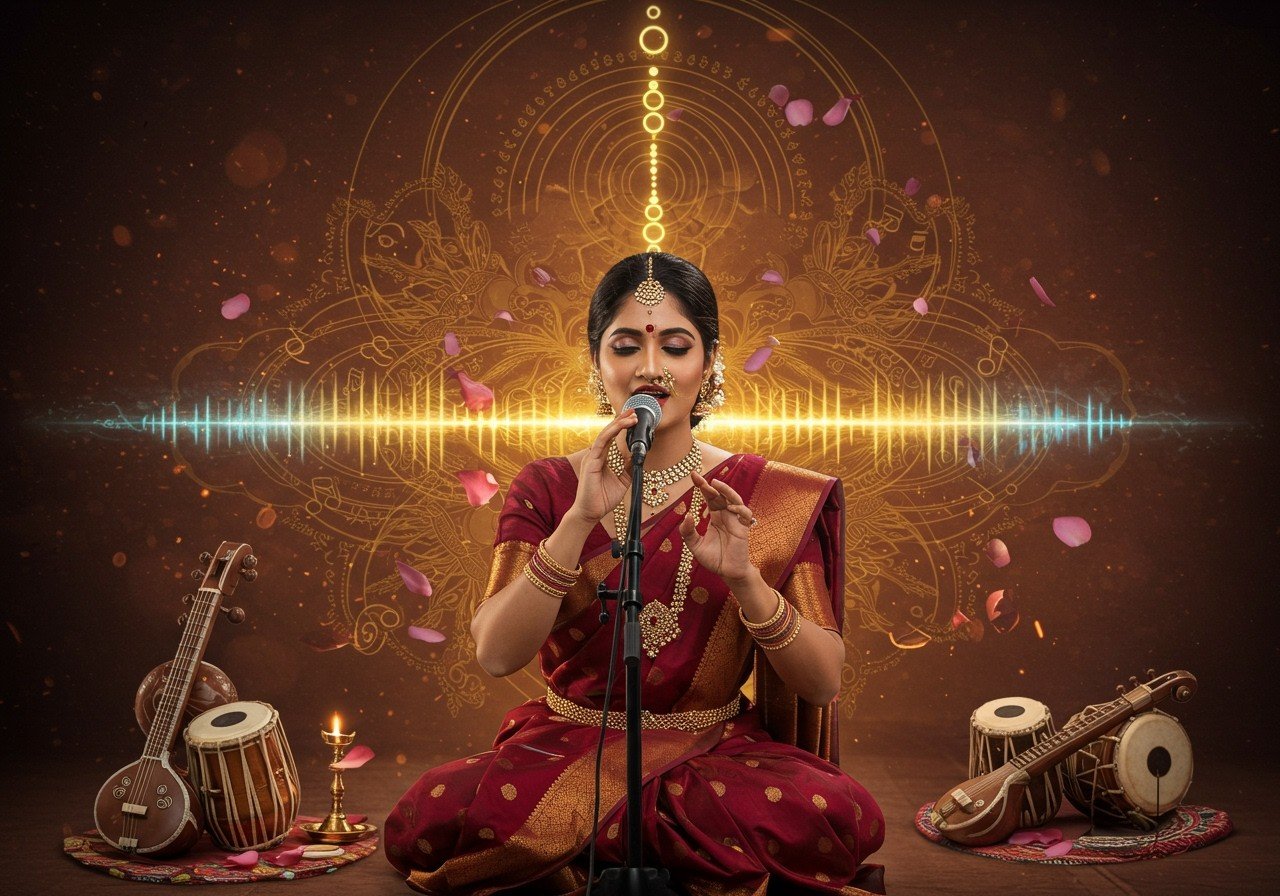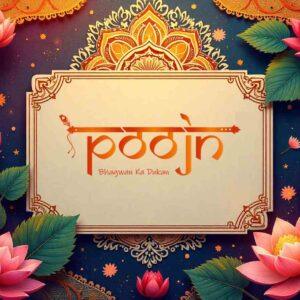
Indian classical music, a vibrant tapestry of sound, tradition, and emotion, possesses a unique depth. A core element contributing to this richness is Shruti, often referred to as microtones. These delicate intervals, smaller than a semitone, lie between the main notes (swaras) and are fundamental to the distinct character of Indian ragas. This article delves into the significance of Shruti in Indian music and its role in enhancing the beauty of ragas.
Understanding Shruti: The Microtones
What exactly is Shruti? In the context of Indian classical music, Shruti represents the smallest perceptible pitch interval that the human ear can discern. Unlike Western music, which typically employs 12 semitones within an octave, traditional Indian music identifies 22 Shrutis. This nuanced approach allows for a more intricate understanding and manipulation of pitch. Think of it like the fine brushstrokes in a painting, adding depth and detail to the overall composition.
The concept of Shruti has deep roots, appearing in ancient Indian scriptures like the Samaveda, which emphasized precise pitch accuracy in Vedic chanting. This historical context underscores Shruti’s foundational role in the development of Indian ragas. Each raga employs a specific combination of Shrutis to evoke distinct moods and emotions, known as rasas, creating a unique emotional landscape for each raga.
From a philosophical perspective, Shruti is often regarded as divine, a bridge between the material and spiritual realms. It forms the basis of melodic movements and emotional expression in music, distinguishing one raga from another. This subtle interplay of Shrutis creates the magic that resonates deeply within us, connecting us to something larger than ourselves.
The Importance of Shruti in Indian Ragas
Shruti plays a crucial role in shaping a raga’s identity and emotional impact. Ragas like Raga Yaman and Raga Bhairavi, for instance, utilize specific Shrutis to create their distinct emotional flavors. In Indian classical music, improvisation is paramount, and musicians use Shrutis to explore melodic variations and express their creativity, weaving intricate patterns of sound that captivate the listener.
Aspiring musicians undergo rigorous training to recognize and reproduce these microtones, highlighting Shruti’s significance in musical education. Mastery of Shruti enables musicians to connect with their audience on a deeper emotional level. These subtle shifts in pitch, though often imperceptible to the untrained ear, can evoke powerful emotions and create a truly immersive experience.
Preserving the purity of Shruti can be challenging in contemporary performances and recordings. The use of modern instruments and recording techniques can sometimes mask or distort these delicate nuances. However, dedicated musicians and scholars continue to strive for authenticity, ensuring that the essence of Shruti remains intact.
Shruti and the Science of Sound
Shruti is intrinsically linked to the science of sound and perception. It involves minute frequency changes between standard musical notes. Our brains process these subtle variations through psychoacoustics, which contributes to the emotional impact of a raga performance. These subtle shifts resonate within us, creating a profound emotional connection to the music.
Research has delved into the unique auditory features of Shruti, providing insights into its effects on listeners. Interestingly, different regions within India have varying interpretations of Shrutis, adding to the cultural richness and diversity of this musical tradition.
Ancient musicologists like Bharata Muni and Sarngadeva meticulously documented Shruti knowledge in treatises like the Natya Shastra and Sangita Ratnakara. These invaluable texts have played a vital role in preserving the tradition of Shruti in Indian music.
Contemporary scholars continue to explore and document Shruti, utilizing digital archives and conducting scholarly research. These ongoing efforts ensure that the vibrancy and relevance of Shruti are maintained in today’s musical landscape.
Embracing the Timeless Elegance of Shruti
Shruti, the very soul of Indian classical music, enriches our heritage with its subtle beauty and profound depth. It invites musicians and listeners on a journey that transcends mere melody, leading us to explore emotional landscapes and connect with our rich traditions. By understanding and appreciating Shruti, we honor an ancient craft and ensure its vibrancy for generations to come. For those seeking to deepen their understanding of Krishna’s flute and the ten avatars of Krishna, Poojn.in offers insightful articles: Krishna’s Flute: Symbolism of Music, Divinity, and Devotion and Krishna’s Ten Avatars (Dashavatara) Explained: Krishna’s Significance.
Poojn.in: Supporting Your Musical Journey
For musicians seeking divine blessings in their musical pursuits, Poojn.in offers a wide selection of essential items. Whether you are exploring the intricacies of Shruti or simply seeking to enhance your musical practice, we provide authentic puja items to honor Goddess Saraswati, the divine patron of music and the arts. Poojn.in provides you with everything you need to create a sacred space for your musical endeavors. You can conveniently order authentic puja kits specifically designed for occasions like Maha Shivaratri from Maha Shivaratri Puja Kits: Essential Items and Best Purchase Locations.
Our collection includes:
- Pure brass Saraswati idols: Available in various sizes to suit your needs and preferences. Each idol is crafted with meticulous detail, embodying the grace and divinity of the Goddess.
- Traditional veena-shaped incense holders: Add a touch of elegance and symbolism to your puja space with these beautifully crafted incense holders. The veena, a symbol of music and knowledge, adds a special significance to your offerings.
- Special puja thalis designed for Saraswati puja: These thalis contain all the essential items required for a traditional Saraswati puja, ensuring that your offerings are complete and respectful.
- Pure cotton wicks for aarti: These high-quality wicks ensure a clean and steady flame, allowing you to perform aarti with reverence and devotion.
- Premium quality incense sticks and dhoop: Create a serene and fragrant atmosphere with our selection of premium incense sticks and dhoop, enhancing your spiritual experience.
- Pure ghee for deepam: Pure ghee is considered sacred and is used to light the deepam, symbolizing the illumination of knowledge and wisdom.
- Fresh flower garlands (available in select cities): Adorn your Saraswati idol with beautiful fresh flower garlands, a symbol of purity and devotion.
We ensure all our products adhere to traditional specifications and are carefully packaged to preserve their purity. You can browse our collection and place orders through our website www.poojn.in, connect with us on WhatsApp at +91-9476142738, or call us directly at +91-33-6902-9784 for personalized assistance. Our dedicated customer service team can guide you in selecting the appropriate items for your musical worship needs. We offer pan-India delivery with special care for fragile items. All products come with detailed instructions for their proper usage in rituals.
Visit Poojn.in today and enhance your musical journey with divine blessings. We are India’s largest Dashakarma bhandar, trusted by musicians and devotees throughout the country.
Frequently Asked Questions about Shruti
What is the role of Shruti in Indian Ragas? Shruti forms the very foundation of Indian ragas, infusing them with depth and emotion. It fills the spaces between the main notes, allowing musicians to express subtle nuances and intricate emotional shades.
How many Shrutis are there in Indian music? Traditionally, Indian music recognizes 22 Shrutis. These microtones offer a vast palette for musicians to create complex melodies and rhythmic patterns, adding a unique dimension to the music.
Why is Shruti important in Indian classical music? Shruti is essential because it allows for finer pitch distinctions, enabling artists to convey the specific mood and character of each raga more effectively. It’s the key to unlocking the emotional depth and spiritual essence of the music.
How does Shruti relate to the science of sound? Shruti connects to the science of sound through its precise pitch variations, aligning with the natural harmonic series and demonstrating the scientific basis of Indian music theory. It reveals the deep connection between music, mathematics, and the natural world.
Can Shruti be used in other forms of music? While predominantly used in Indian classical music, Shruti can certainly inspire other musical genres. Introducing microtonal variations can enrich compositions with unique textures and expand the expressive possibilities of any musical tradition.
Are Shrutis the same as Western microtones? While similar in concept, Shrutis are culturally distinct from Western microtones. Indian music utilizes Shrutis to enhance the emotional and spiritual aspects of the music, connecting it to a rich philosophical and spiritual heritage.
How do musicians learn to identify and use Shruti? Mastering Shruti requires dedicated training and practice under the guidance of a guru or experienced teacher. Musicians develop a keen ear for these subtle tonal variations, learning to discern and reproduce them with precision.
Is there a difference between Shruti and Swara? Yes, there’s a fundamental difference. Swaras represent the main notes in a scale, while Shruti refers to the microtones or subtle pitch variations between these swaras. Think of the swaras as the main pillars of a building, and the shrutis as the intricate details that complete the structure.


